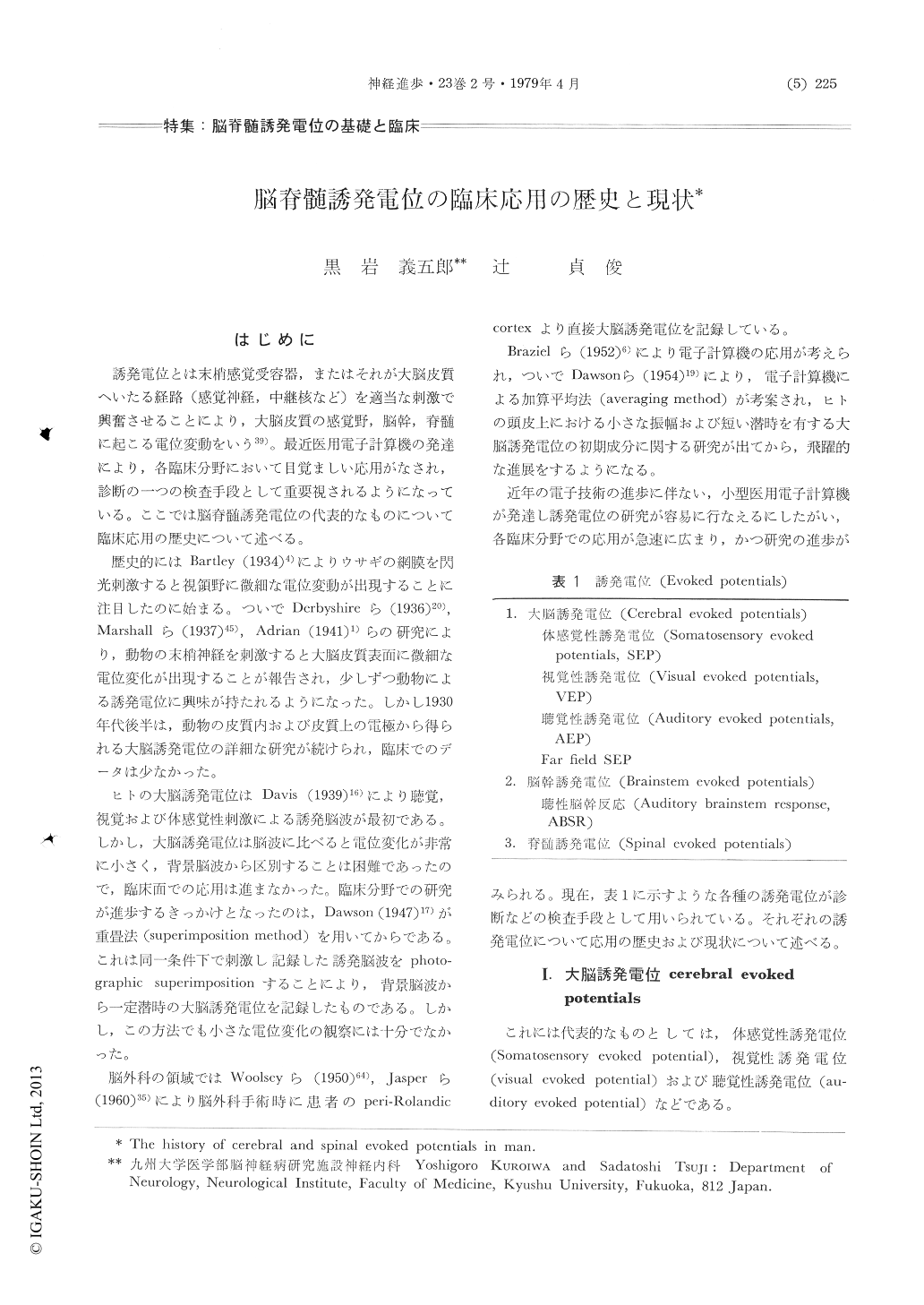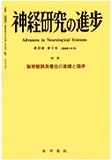Japanese
English
- 有料閲覧
- Abstract 文献概要
- 1ページ目 Look Inside
はじめに
誘発電位とは末梢感覚受容器,またはそれが大脳皮質へいたる経路(感覚神経,中継核など)を適当な刺激で興奮させることにより,大脳皮質の感覚野,脳幹,脊髄に起こる電位変動をいう89)。最近医用電子計算機の発達により,各臨床分野において目覚ましい応用がなされ,診断の一つの検査手段として重要視されるようになっている。ここでは脳脊髄誘発電位の代表的なものについて臨床応用の歴史について述べる。
歴史的にはBartley(1934)4)によりウサギの網膜を閃光刺激すると視領野に微細な電位変動が出現することに注目したのに始まる。ついでDerbyshireら(1936)20),Marshallら(1937)45),Adrian(1941)1)らの研究により,動物の末梢神経を刺激すると大脳皮質表面に微細な電位変化が出現することが報告され,少しずつ動物による誘発電位に興味が持たれるようになった。しかし1930年代後半は,動物の皮質内および皮質上の電極から得られる大脳誘発電位の詳細な研究が続けられ,臨床でのデータは少なかった。
Abstract
We reviewed the history of cerebral and spinal evoked potentials, using clinical study in man.
The superposition and averaging techniques of several traces on the cathode ray oscilloscope introduced by Dawson for detecting the response at the scalp of man to electrical stimulation of a peripheral nerve in 1947 and 1954.
These techniques have recently permitted study of smaller, short latency components of the human evoked potentials. As computered design improved, the detection of potentials at the scalp became more and more refined.

Copyright © 1979, Igaku-Shoin Ltd. All rights reserved.


